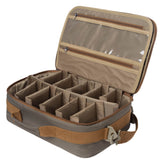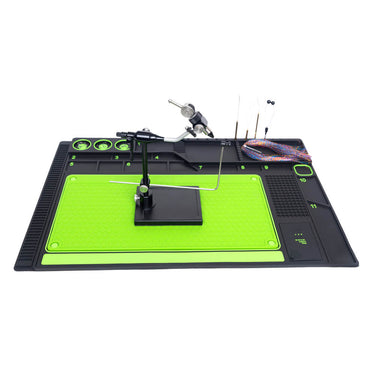CDC: Unveiling the Hidden Gems in Data Insights
The Humble CDC Fly: Why This Duck Butt Feather is My Secret Weapon
You ever have one of those flies that just works, even when it shouldn’t? For me, that’s the CDC pattern. Last summer on the Yellowstone, I was getting skunked until I switched to a scruffy little CDC caddis—suddenly, every riser within 20 yards wanted a piece of it. Funny how something that comes from a duck’s backside (yeah, cul de canard literally means "duck’s butt") can outfish your fanciest parachute Adams.
Tying It Right (Or At Least, How I Do It)
Look, you can tie this on any standard dry fly hook—size 12 to 22, depending on whether you’re imitating a mayfly or a midge. I like a sparse tail, just a few CDC fibers or microfibbets, ’cause trout get weirdly suspicious of anything too bushy. The body? Keep it lean. Dubbing, thread, whatever—just don’t overdo it. CDC’s magic is in its float, and a chunky body’ll sink it faster than a rookie wading in felt soles on mossy rocks.
Now, the feathers. Here’s where beginners screw up: they treat CDC like regular hackle, wrapping it tight. Big mistake. These fibers are delicate—kinda like a whiskey cork, they need room to breathe. I either use a split-thread technique or just tie ’em in loose. Frankly, I prefer the dubbing loop method for wings; gives ’em that jiggly action in the film, like a crippled mayfly struggling to take off.
What It Mimics (Hint: Almost Everything)
CDC’s beauty is its vagueness. On the Madison last spring, I watched a brown sip size 18 BWOs like they were going out of style. My CDC fly wasn’t a perfect match—more of a suggestion of a mayfly—but fish don’t care. It’s got that natural pulse in the water, especially in flat light or when mayflies are hatching late afternoon and the trout get fussy. Works for caddis too, if you tie it with a grizzlier wing. Midges? Just go tiny and dark.
Where It Shines
Stillwaters, freestones, spring creeks—doesn’t matter. I’ve caught fish on CDC patterns in the gin-clear flats of the Bighorn and the choppy riffles of the Deschutes. But here’s the thing: it’s not a blind-casting fly. You gotta watch the water. See a rise? Toss your CDC 3 feet upstream and let it dead-drift. If nothing’s happening, well… maybe switch to a streamer. (YMMV, but I’ve never had much luck forcing CDC when fish aren’t looking up.)
Oh, and one last tip: store those CDC feathers dry. They’re preen oil miracles, but cram ’em in a damp fly box, and they’ll sulk like a wet dog. Trust me, I learned that the hard way on the Henry’s Fork.















